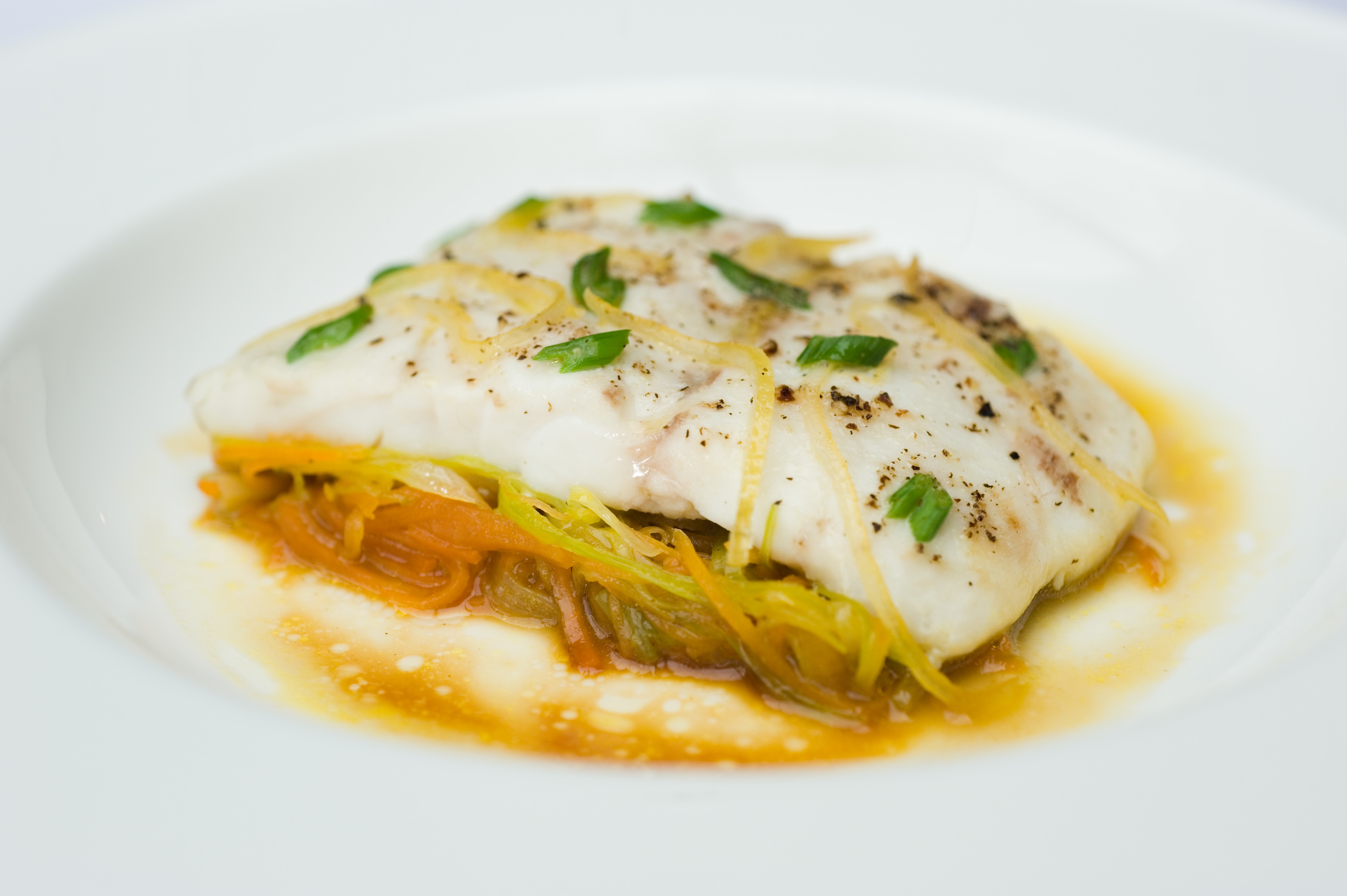We’re so incredibly lucky here in Scotland. We have access to some of the best seafood in the world right on our doorstep – something many chefs would envy. Indeed, one of the reasons I chose Scotland to set up my own restaurant was the fantastic fish and shellfish we have here.
As a young chef working in London and France, I was always surprised how much of the prime seafood we used came from my home.
Fishermen work so incredibly hard, risking their lives to bring us fresh fish from our Scottish shores and I have the utmost respect for them, their expertise and their work.
Without those incredible suppliers, we wouldn’t be able to serve the quality of food that we do.
I really believe we should be making the most of the wonderful seafood on offer. Cooking fish doesn’t have to be difficult and it’s so incredibly versatile. Fresh fish, very simply prepared, just can’t be beaten. Whether you’re cooking the fish whole, filleted or as a part of a delicious stew, soup or pasta dish, the key is absolute freshness.
Make your fishmonger your friend and ask them for advice on what’s fresh in that day, where it was sourced, which species or cuts work well and what you can do with them if you need a little more advice.
This sea bass en papillote is a French technique but it’s a great dish to try. The slow cooking method really seals in all the delicious flavour and texture of the fish, as well as keeping it very light and healthy. It’s just perfect for spring served with vibrant seasonal vegetables.
I also love nothing more than whole roasted fish. Part of the joy is in unearthing all of the fresh white flesh and taking your time to relish every part of the fish. However you like to prepare it, I really recommend you make the most of Scottish seafood and try lots of different species, cooked in lots of different ways.
SMOKED SALMON AND PICKLED CUCUMBER
SERVES 4
4 slices rye bread
4 x 75g smoked salmon
creme fraiche
chives
1 lemon (sliced into 4 wedges)
1 handful of capers
lemon zest
FOR THE PICKLED CUCUMBER
1/2 a cucumber
1 tsp Maldon sea salt
lemon juice
dill
TO MAKE THE PICKLED CUCUMBER: Chop the cucumber into large squares approximately 2cm. Sprinkle Maldon sea salt over the cucumber and leave to sit for an hour. Squeeze lemon juice over and add chopped dill.
Slice salmon and place on a plate. On the same plate, arrange dabs of crème fraîche, capers, chopped chives, lemon zest and a wedge of lemon. Top the smoked salmon with pickled cucumber, add the sliced rye bread to the plate and serve.
SERVES 2
2 x 200g sea bass fillets
1 carrot
1/2 a leek
20g root ginger
2 tsp olive oil
1/2 a fennel bulb
500ml fish stock
Zest of 1/2 a lemon
2 spring onions, chopped
Salt and pepper
Remove the skin from the sea bass fillets. Peel the carrot and cut into julienne strips. Remove the outer layers of the leek and cut into fine strips. Peel the ginger (keep the skin for the stock) and cut into fine strips. Saute the ginger in a teaspoon of olive oil, add the carrots and the leek and cook for 3-4 min. Season to taste and set aside.
TO MAKE THE FENNEL STOCK:
Heat a teaspoon of olive oil in a saucepan. Chop the fennel finely and saute together with the skin of the ginger. Pour in the fish stock to cover the fennel and cook for 15 min. Remove the pan from the heat and set aside so the stock can infuse for 20 min. Pass it through a fine sieve, keeping the liquid but discarding the vegetables.
TO MAKE THE PAPILLOTES:
Preheat the oven to 180oC/Gas 4.
Cut a circle of greaseproof paper measuring about 20cm in diameter and place it on an A3-sized piece of aluminum foil. Place half the leek and ginger mixture in the centre of the greaseproof circle.
Add a sea bass fillet and top with some lemon zest, spring onion, salt and pepper. Pour 100ml of the fennel fish stock onto the sea bass. Turn up the sides of the aluminum foil to keep the ingredients in, but leave open. If making this dish for four people, put two pieces of fish in each parcel.
Put the papillotes on an ovenproof pan and heat the pan on top of the stove until the foil is warm. Cook in the preheated oven for 5 mins.
SEAFOOD CHOWDER
SERVES 4
FOR THE SAUCE
250g smoked haddock
1 onion
1 clove of garlic
2 potatoes
250ml milk
1 tsp butter
1 bay leaf
Begin by slicing the onions, garlic and potato.
Sweat the onions, garlic and potatoes together and add salt and the bay leaf and cook in a pan until soft. Add milk and bring to the boil. Add smoked haddock and simmer for 1 minute. Finally, blitz until smooth.
FOR THE FILLING
4 poached smoked haddock fillets
1 handful of spinach
1 potato
200g peas
1 leek
12 mussels
12 prawns
1 poached egg
Firstly, dice the potatoes and leeks then blanch together. Steam the mussels open. Add the peas, leeks, prawns and the poached haddock into the mussel liquor to warm.
Sweat the spinach.
To serve, arrange the filling in a bowl, pour the sauce over and gently place the poached haddock on top.
